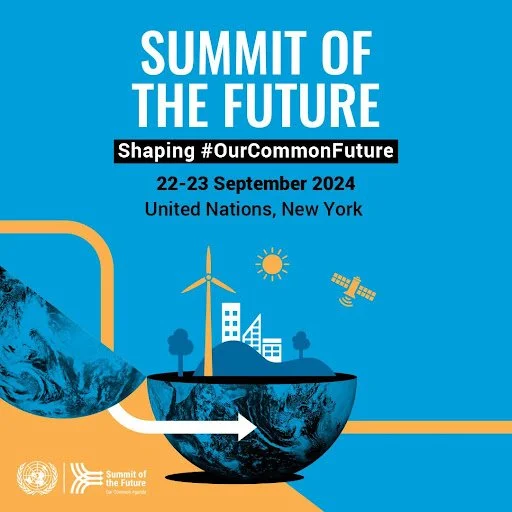Takeaways From The Summit of The Future
Image Source: The United Nations
The United Nations convened the Summit of a Future which concluded with world leaders adopting a Pact for the Future that included the Global Digital Compact and a Declaration on Future Generations. The Pact seeks to adapt international cooperation to the realities of today and future uncertainties. The pact answers the call made by Secretary-General António Guterres that, “we cannot create a future fit for our grandchildren with systems built for our grandparents.”
In the Pact for the Future, the Heads of States commit to using the current crisis we face as an opportunity for global transformation and progress. Under Part 11, they commit to accelerate meeting obligations under the UNFCCC and the Paris Agreement. Action 11 of the Pact is a commitment to ‘strengthen our actions related to climate change.’ The document recognises the importance of the common but differentiated responsibilities and respective capabilities principle. Action 11(c) particularly invites parties to contribute to global efforts to reduce emissions in line with the Paris Agreements and echoes significant previous commitments. These include the goal of ‘tripling renewable energy capacity globally and doubling the global average annual rate of energy efficiency improvements by 2030’ among others which can be found under that subsection. Action 11(d) also recognises the role of transitional fuels in enabling the energy transition and ensuring energy security.
The Pact has drawn attention to the issues to be discussed at COP29 - the submission of a new round of NDCs and the new collective quantified goal on climate finance. Action 11(g) reaffirms that nationally determined contributions are nationally determined and urges all countries to submit ambitious and economy-wide emission reduction targets that cover all greenhouse gasses, sectors and categories that are aligned to the 1.5 C goal. Action 11(f) expresses a commitment to setting the New Collective Quantified Goal (NCQG) on climate finance of at least $100 billion at COP29. Action 52 of the Pact also includes a commitment to ‘accelerate the reform of the international financial architecture so that it can meet the urgent challenge of climate change.’ In particular, it urges development finance institutions, including multilateral development banks (MDBs) and the private sector to increase climate finance to developing countries, including using partnership based approaches. Furthermore, it urged international financial institutions and entities to improve their risk assessments of developing countries to deal with the high cost of capital.
Subscribe to our newsletter below and stay informed on the latest updates, engagements, and news!


